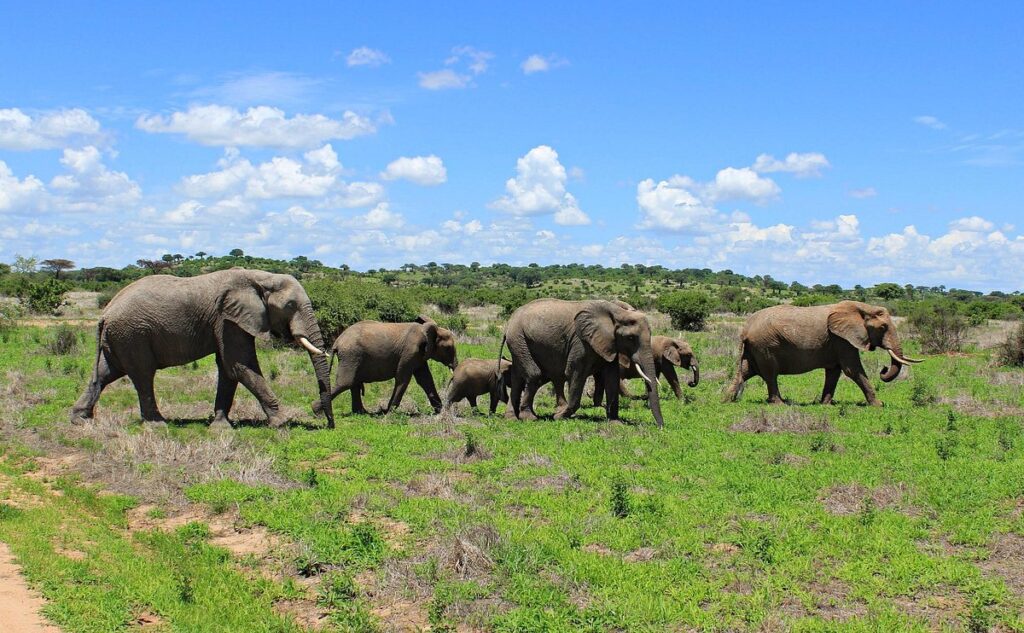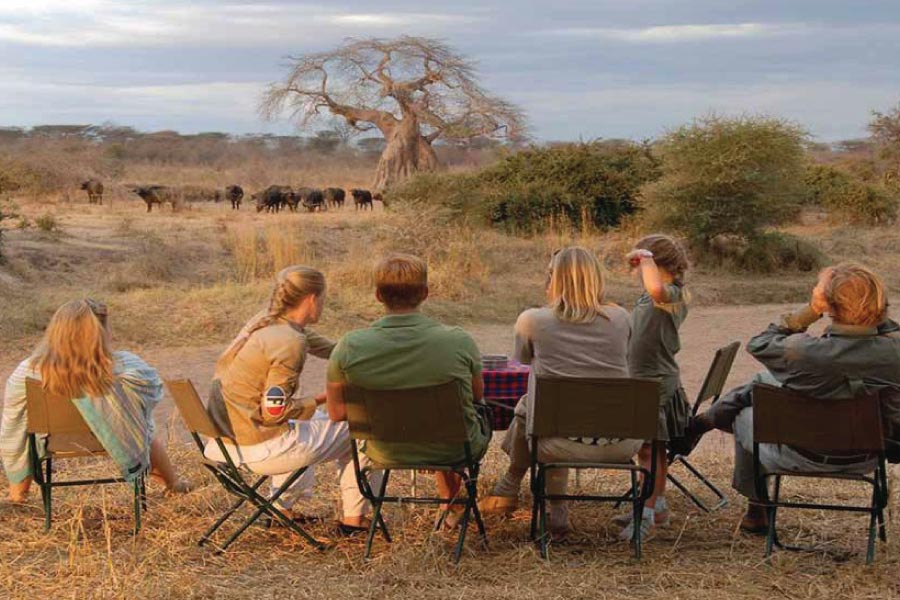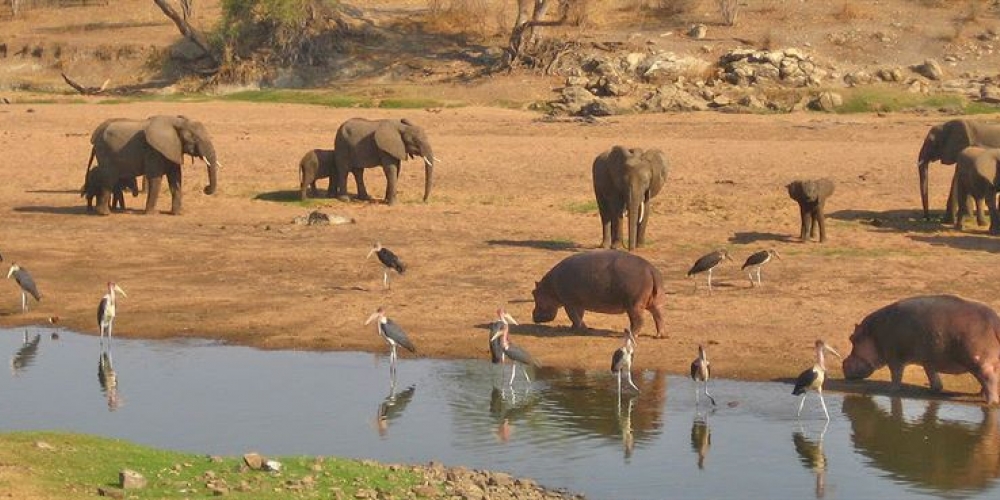Self Drive in Ruaha National Park
Ruaha National Park, managed by the Tanzania National Parks Authority, is the largest protected area in Tanzania, located near Iringa city, encompassing 20,226 square kilometers. It includes the Usangu National Reserve and significant wetlands, named after the Ruaha River that flows through the park, attracting diverse wildlife and offering exceptional wildlife viewing opportunities. Ruaha National Park originated as a game reserve and transitioned to a national park in 1964 to safeguard many types of animals and flora, including primates, mammals such as a substantial population of elephants, birds, butterflies, and its remarkable ecosystem.

Attractions for tourists in Ruaha National Park
Ruaha National Park, the largest park in East Africa, boasts a diverse array of mammals, including both common and rare species. Notable inhabitants include elephants, giraffes, hippos, buffalo, zebras, wildebeests, white rhinos, black rhinos, lions, leopards, cheetahs, hyenas, wild dogs, greater kudus, and various antelopes, all of which can be observed during wildlife viewing excursions in the park.
Ruaha National Park hosts about 570 avian species, including endemic, near-endemic, and migratory species commonly observed inside the park. Notable bird species include the Giant Kingfisher, Goliath Heron, Ashy Starling, Emerald-Spotted Wood Dove, Southern Ground Hornbill, Crested Barbet, Yellow-Collared Lovebird, Black-Bellied Bustard, Bateleur, Tanzanian Red-Billed Hornbill, African Fish Eagle, Collared Palm-Thrush, Spur-Winged Goose, Long-Crested Eagle, among others, readily observable in the savanna woodland. The optimal period for birdwatching in Ruaha National Park is throughout the year, particularly from November to April, which coincides with the nesting season of resident birds and the peak time for observing migratory species.
The plant cover of Ruaha National Park consists of savanna grassland and woodland, featuring flat plains, acacia trees, bushland, swamps, rolling hills, kopjes, and the remarkable 160 km Ruaha River. The complete vegetation offers optimal habitats and observation areas for various types of flora and fauna, including wildlife such as mammals, birds, butterflies, and others encountered during the wildlife viewing safari in the park.
River Ruaha is the primary tourist attraction of the park and the origin of its name. The Ruaha River traverses the Usangu plains, supplying irrigation water to local farmers and serving as the primary water source that maintains the park’s moisture during arid months. Numerous wildlife species congregate along the riverbanks to hydrate during arid months. The Ruaha River also provides water to the dam utilized for hydroelectric power generation for the people of Tanzania and beyond.
Tourist activities in Ruaha national park
Game drives: Similar to other savanna parks in Tanzania, Ruaha National Park is an exceptional site for tourists seeking to discover the Tanzanian Southern Circuit through a game drive trip. Ruaha National Park provides both daytime and nighttime game drives, featuring numerous encounters with diverse wildlife in the park’s vast environment. Commencing the day with an early game drive gives an opportunity to observe leopards, cheetahs, serval cats, wild dogs, and several other nocturnal species and predators. Embark on an afternoon wildlife drive to observe elephants, hippos, antelopes, lions, kudus, zebras, crocodiles, impalas, and several more species. During the nocturnal game drive, there exists a likelihood of observing mammals akin to those encountered during the early morning game drive. Game drives in Ruaha National Park occur in several areas, including the Ruaha River, wide savanna plains, kopjes, and forested regions.
Guided nature walks: This is the optimal method to appreciate the breathtaking scenery of Ruaha National Park. Embark on a guided walking safari with seasoned local guides along established pathways through the bush, shrubs, swamps, and forests, while observing various species of fauna and vegetation.

Birdwatching: Ruaha National Park is a destination where both novice and seasoned birders can really appreciate the avian experience. The park is home to over 570 species of birds observed throughout its area. The optimal birding season occurs from November to April, during which the park attracts migratory birds from Europe and various regions of Africa. This season also witnesses elevated nesting rates among certain bird species.
Additional pursuits to relish while a Tanzania safari to Ruaha National Park encompass photography and stargazing, typically facilitated at the lodges.
Arriving at the destination
Access to Ruaha National Park is available via air or road transport, contingent upon guests’ preferences.
Most journeys to Ruaha National Park commence from Julius Nyerere International Airport in Dar es Salaam, approximately a 10-hour drive. It is also feasible to combine visits to Ruaha National Park with Mikumi National Park, both located in the southern circuit, along with Selous Game Reserve. The journey by road from Ruaha National Park to Mikumi National Park requires approximately five hours.
Air transport is the most expedient method to reach the park in the shortest duration, utilizing either charter flights or scheduled services such as Coastal Aviation, Auric Link, and Safari Air Link, which depart from Dar es Salaam to the park’s airstrip. Additionally, connections from other parks, including Mikumi National Park and Selous Game Reserve, located within Tanzania’s southern circuit, are also feasible. Connections to Ruaha National Park are also feasible from other parks within Tanzania’s northern circuit, including Serengeti National Park.

Accommodations in Ruaha National Park
Ruaha National Park offers a plethora of accommodation options, including camps, hotels, and lodges, catering to budget, midrange, and luxury travelers. Notable establishments include Ikuka Camp, Ruaha River Lodge, Kigelia Camp, Ruaha Hilltop Lodge, Jongomero Camp, Mwagusi Safari Camp, Mdonya Old River Camp, Kwihala Camp, Kichaka Camp, Msembe Rest House, Jabali Ridge, Kilimatonge Camp, Tandala Tented Camp, Chongela Camp, and Sunset Mountain Lodge, all located throughout the park.

